I’m a boat nut. I’ve built and rowed, sanded and sailed, painted and paddled most of my life. One of my favorite activities is gliding around a harbor in a dinghy, rowing or sailing, working up an appetite for steamed shellfish. Another favorite is my job teaching boatbuilding at The Carpenter’s Boatshop in Pemaquid, Maine. This offers endless hours of boat talk, swapping stories, and trying to convince the listener that your way of doing it is the best solution. Well, the opportunity to talk with Arch Davis and take a look at his latest design, GRACE’S TENDER, allowed me to indulge both interests. Davis honed his design and building skills in New Zealand and has since brought both to the waters of midcoast Maine. GRACE’S TENDER was designed as a project to be completed by his daughter, Grace, now 12, with the close support of her dad and his workshop.The boat has been drawn wide to provide initial stability. There is a nice transition from a shallow V-bottom shape in the middle of the boat to a deeper V forward that requires about as much twist as you can demand from plywood panels. This yields lots of interior space on a very short waterline. Don’t ask to put too much adult weight onboard without affecting performance. At 55 lbs, the hull is lightweight, easy to carry, and can be cartopped with the appropriate rack. The rig is a standing lugsail that puts up a generous area on short spars for portability and easy storage.Construction is glued-and-screwed marine plywood, a system used for many modern small boats. This renders a light and strong hull that won’t leak when launched after extended periods ashore. The strongback on which the temporary building frames are attached is quite rigid, yet the frames seem to flex until the bottom and planking are attached. In my opinion, the whole setup may benefit from an additional temporary brace or two. The stem is an interesting lamination of plywood and softwood. The plywood inside gives cross-grain stability, while the softwood sides provide an easy-to-carve landing for the planking.
Stay On Course

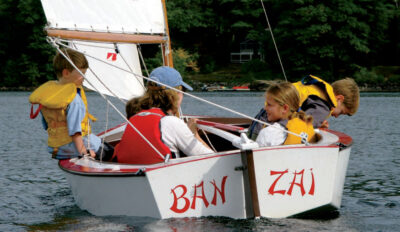
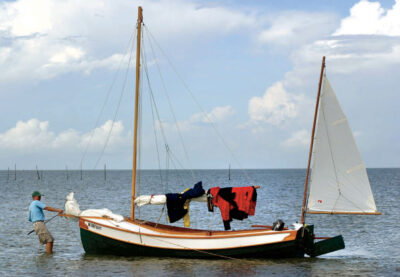
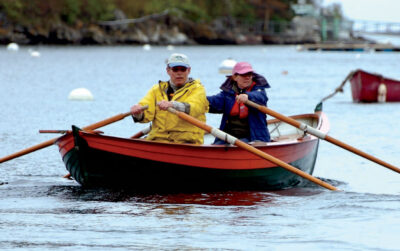
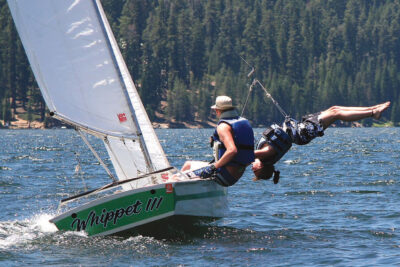
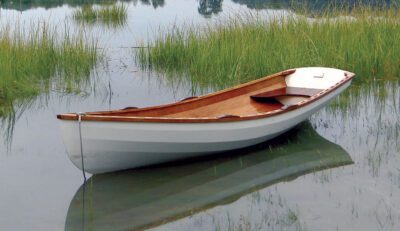
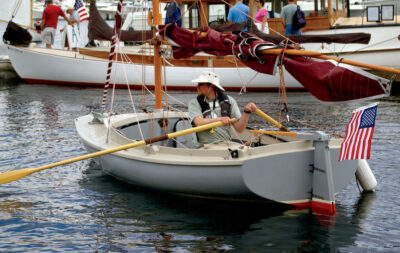
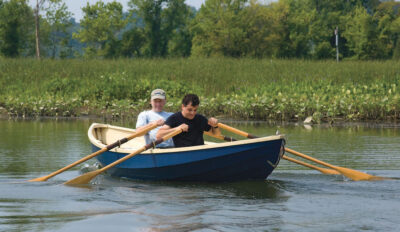
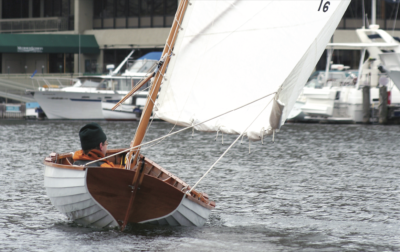
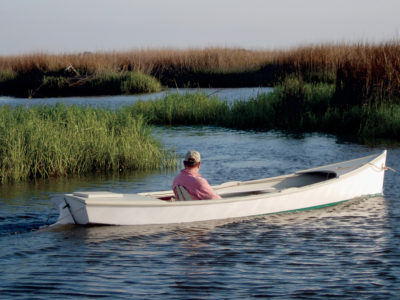
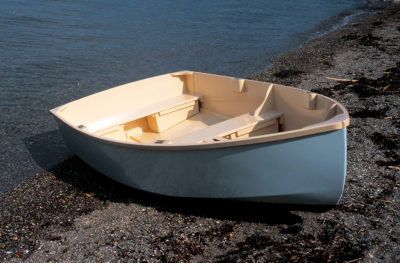
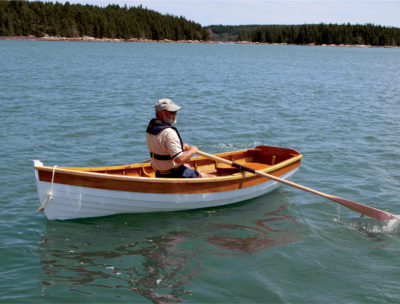
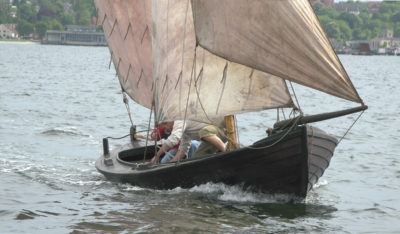
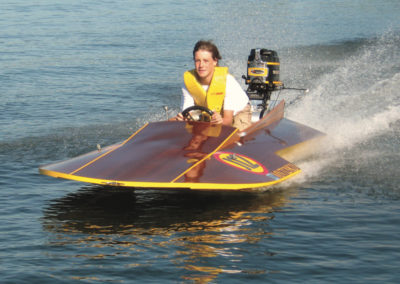
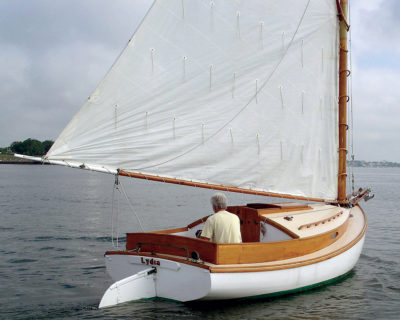
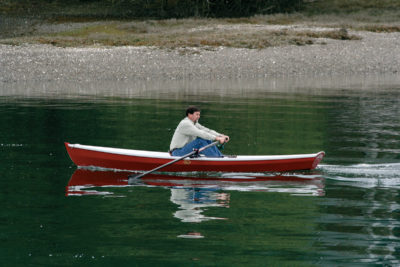
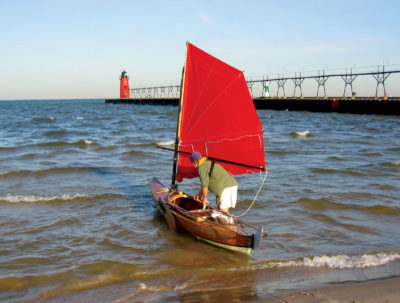
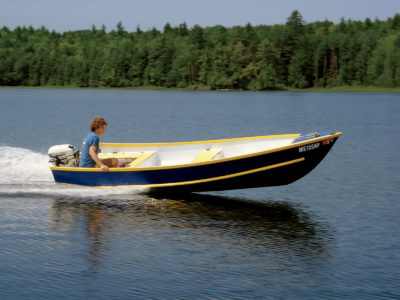
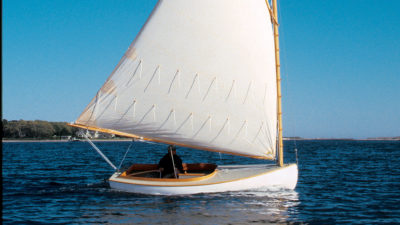
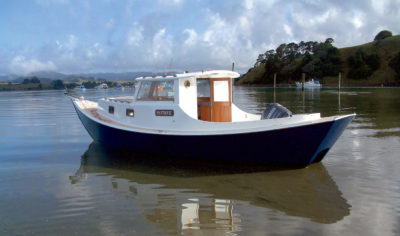
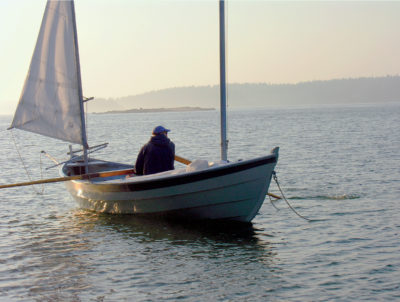
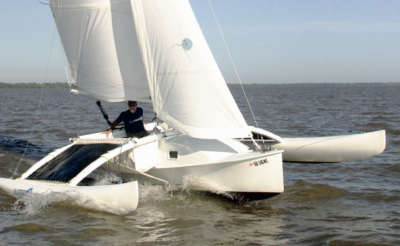
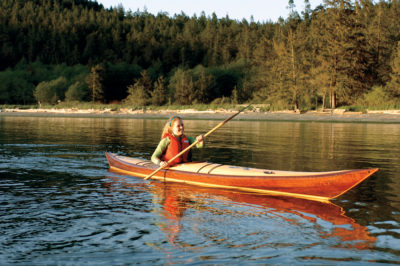
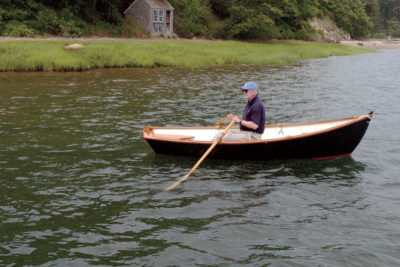
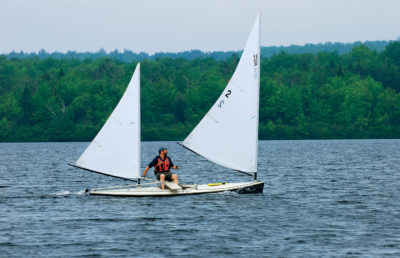
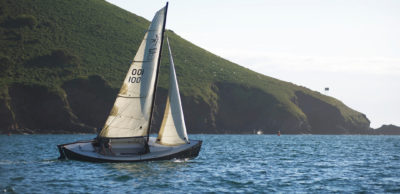
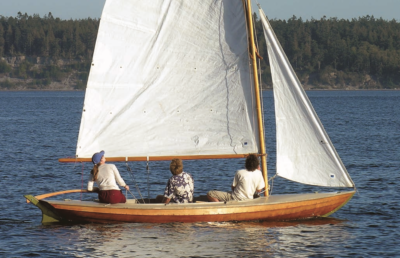
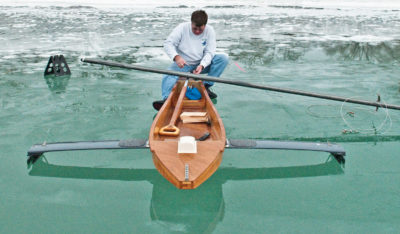
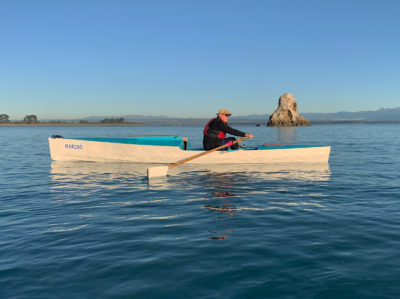
Join The Conversation
We welcome your comments about this article. If you’d like to include a photo or a video with your comment, please email the file or link.